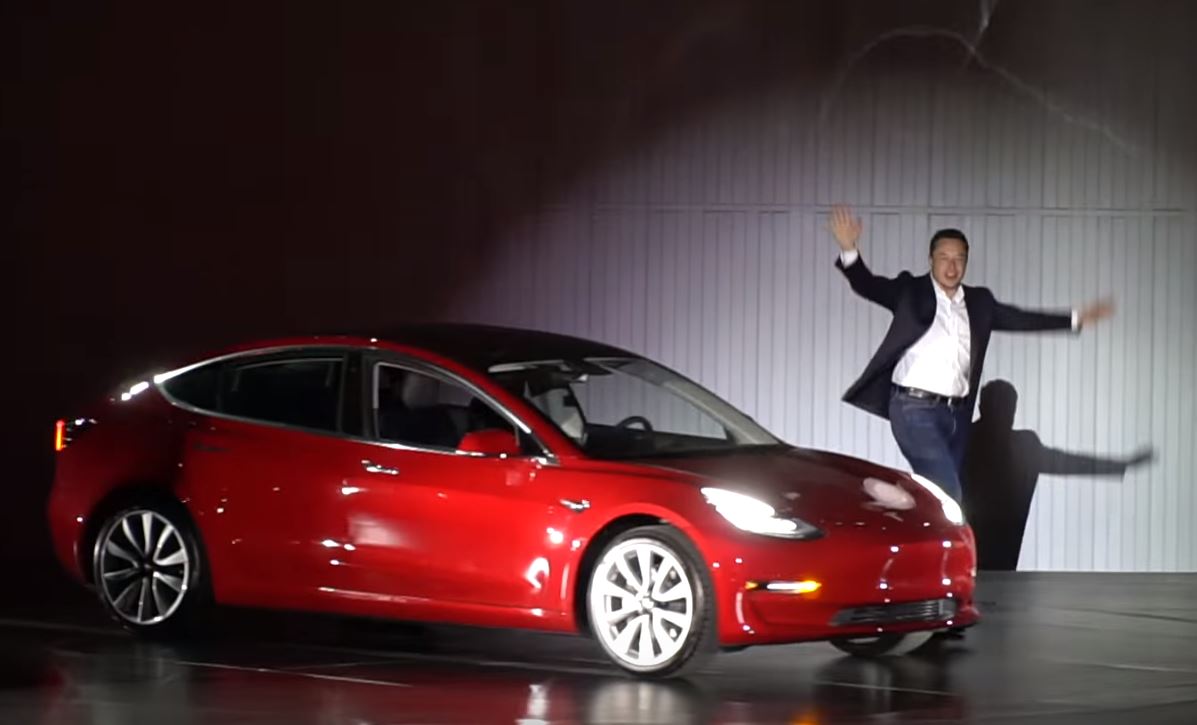Toni Sacconaghi of Bernstein has been a Tesla detractor in the past, but his tunes are changing as it becomes clearer that the Model 3 is far ahead of its time. Even traditional automakers who were touted to slam Tesla to the ground with their greater resources and deeper auto experience are obviously struggling to meet the Model 3 on price, range and, not least of all, the star factor.
“But let’s make this clear: there is no actual flood of competition coming. We tallied up every announced electric vehicle arriving in the U.S. between now and 2022, and the results were stark. The Model 3, which will account for 70% of Tesla’s revenues within two years, faces no credible competition whatsoever until 2020, or until Volvo AB launches its all-electric Polestar 2 sedan.” – Toni Sacconaghi with other analysts at Bernstein
The real point is that while there’s currently no competition to rival the Model 3 or even Model S and X, even when competition does come, Tesla will be able to “hold its own”, the analysts said.
One interesting point made in their note was the fact that other automakers are only going to “validate and expand the existing market for electric cars” as they roll out their battery-powered fleets. And that brings us to the real fire line that Tesla has organically built around itself – battery tech.
Tesla’s battery tech is already far advanced when compared to anything else on the EV market, and that edge will be maintained far beyond 2020, in our own opinion. Our stand is that no significant competition will be around for at least the next five years because battery manufacturing that those volume levels – when Tesla is selling 500,000 to a million EVs annually – is going to take that long or more.
Traditional automakers might have more money leverage, but they don’t have the core tech that makes EVs run. So, no matter how awesome the Porsche Taycan looks or how poised the Jaguar I-Pace is to take on Tesla EVs, they can’t manufacture batteries – or even procure them – at volume. And it boils down to the fact that nobody other than Tesla has the technology and capability of building hundreds of thousands of EV batteries every year over the next five years.
What about Chinese battery makers? Well, Tesla has already gone a step ahead and signed a three-year deal with Ganfeng Lithium Co., China’s largest lithium manufacturer, to supply battery-grade Lithium Hydroxide. The Chinese Gigafactory 3 facility will very likely be making batteries and cars, and while it’s not clear who the battery partner might be, Tesla is already looking to take care of the lithium supply angle over the next three years. Its recent deal with Australia’s Kidman Resources is also aimed at ensuring a steady supply of lithium for its EV batteries.
Companies like Volkswagen are putting billions into this area as well, but only for battery supply rather than for raw materials because they don’t have the infrastructure yet to make batteries themselves. They might in the future, but it’s going to be years before they can start producing high volumes, especially since Tesla’s battery cathode chemistry itself is more advanced than anything else commercially viable at this point in time.
That long-term thinking is what will keep Tesla on top of the EV food chain for at least the next half decade, if not longer. The giants of auto will inevitably catch up to Tesla in the next ten years, but by then the latter will be a well-established global brand with prices ranging from $25,000 all the way up to $250,000. That itself is a segment-busting structure rarely seen in the auto industry.
Bernstein’s analysts are right. Nothing in the horizon until at least 2020, and even then “no actual flood of competition coming” for the Tesla Model 3. Our outlook is even more skewed towards a Tesla-dominated EV market, with a timeline of 2023 for other car makers to meaningfully close the gap between Tesla and themselves in terms of sales volume, breadth of offering and price band, not to mention battery range and mass production capability.



